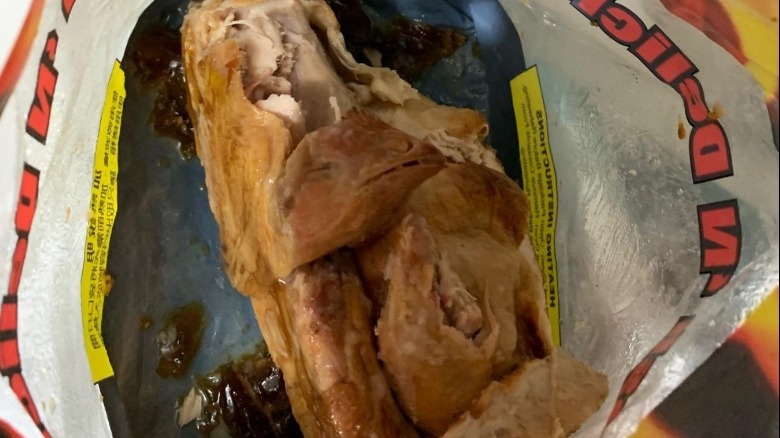How Costco Taiwan's Rotisserie Chicken Is Different From The US
What comes to mind when you think of Costco? Maybe it's mega-tubs of mayo or the chance to score a sweet deal on some decent budget-priced booze. For the more anxious among us, it could be those sky-high piles of boxes towering over our heads. (Ever stop to wonder what would happen if any of them took a tumble?) On a happier note, there are all those yummy goodies at the food court to look forward to when we finally find our way out of the maze of aisles. For many Costco shoppers, though, no trip to the warehouse is complete without picking up at least one of those delicious – and oh, so reasonably-priced - rotisserie chickens.
Costco rotisserie chickens, it seems, are a worldwide phenomenon. One Redditor in Taiwan posted a few shots of a rotisserie chicken they picked up at a Costco and revealed that their purchase came with a little added bonus they hadn't been expecting.
The chicken comes complete with its head
The Redditor, upon opening their bag of chicken (or just peeking through the cellophane wrapper), found that their anatomically-correct chicken included one body part not usually found on rotisserie chickens in the U.S.: the head. As they commented on this fortuitous freebie, "It was a surprise to me!" Another commenter said this isn't unusual for folks who live in that part of the world, saying that "people like getting the whole chicken, with head means it's 'fresh'."
A Vancouver food blog called Nancyland puts forth a different explanation based on a Chinese New Year dinner tradition observed by their family. They serve their chicken with its head still attached, at least for this special occasion, and the reason's surprisingly sweet. As the blogger explains, the head serves as a reminder that this meal was once a living creature, and should be consumed with all due respect. One more reason why the head may be considered a vital part of the chicken, even after it has been cooked, comes from SupChina. It seems that a whole chicken, complete with both head and feet, is a necessity for Lunar New Year celebrations as it symbolizes family togetherness.

